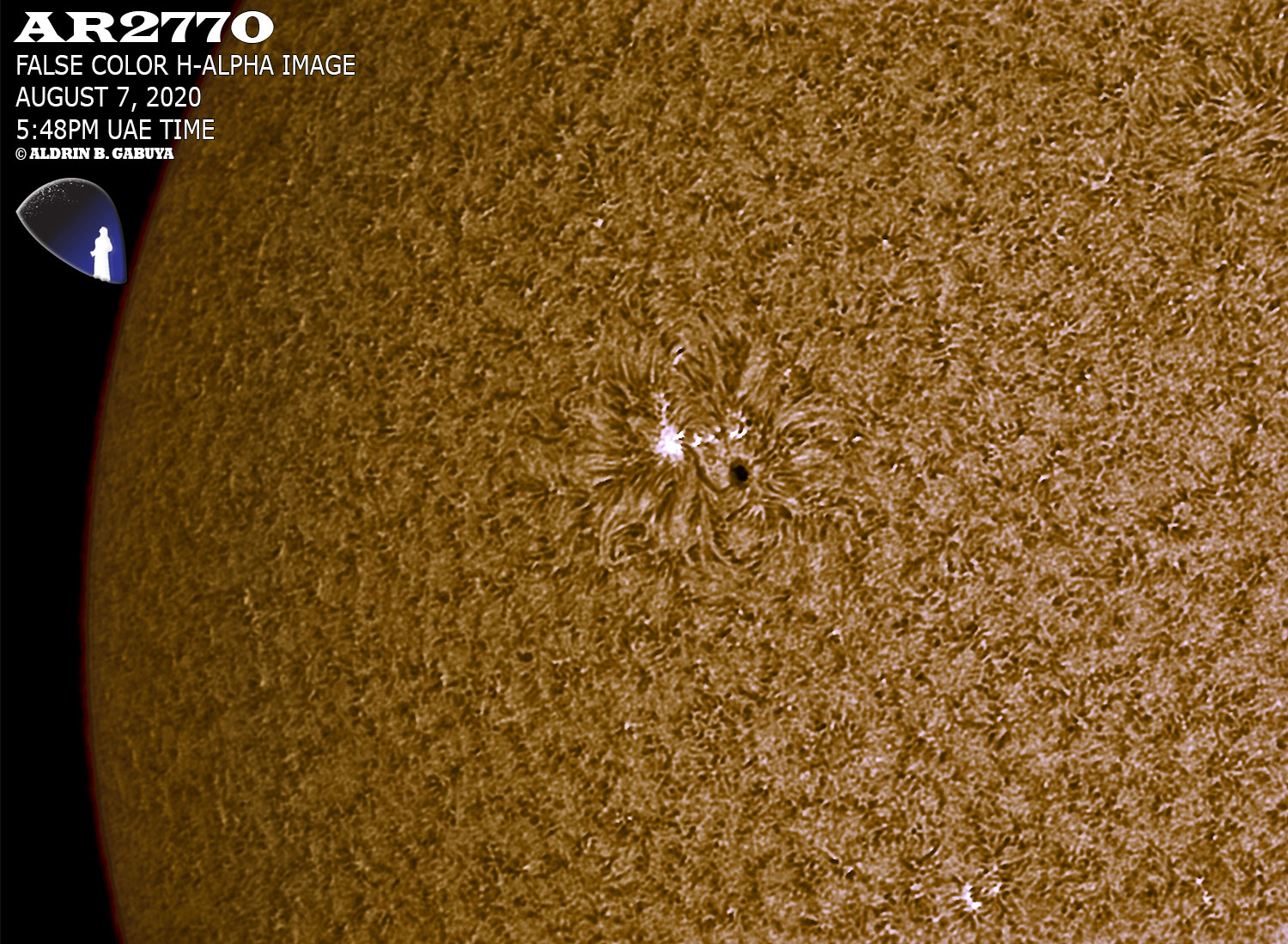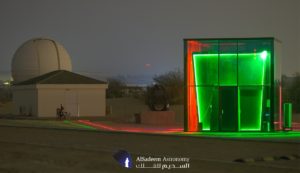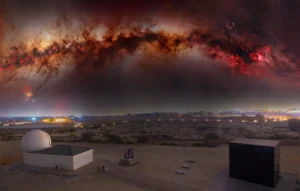Here are today’s solar images taken from Al Sadeem Observatory, August 7, 2020.
The sky was partly cloudy with intermittent moderate breeze which provided average transparency and seeing at the time these images were taken.
The lone visible sunspot group AR2770 (Modified Zurich/Mcintosh sunspot configuration: Cso/beta) developed few tiny spots on its trailer but has been relatively quiet over the past 24 hours. The latest sunspot number (based on visual count and Wolf number calculation) is 13.
The remnant enhanced plages associated with the former AR2768 and AR2769, as well as the evident bipolar structure of AR2770 remain clearly visible, as well as few short stable filaments at the far northern hemisphere, and some small quiescent prominences at the southwestern limb were distinctively captured in H-alpha imagery.
Space weather agencies* forecast solar activity to be at low levels with chances of weak X-ray fluxes or flares up to B-class (possibly up to C-class) intensity mainly from AR2770. Close monitoring is being conducted by numerous space weather agencies for any significant development.
Equipment used are Skywatcher 120mm refractor telescope with Baader filter and unmodified Canon EOS 1D Mark IV DSLR camera for visible imagery. For H-alpha imagery, the equipment used are Lunt 60mm H-alpha solar telescope, and QHYCCD290III mono camera; all mounted on Skywatcher EQ6 pro mount Pre-processing of visible solar images was performed in PIPP, stacking in Autostakkert, slight wavelet adjustments in Registax 6, and post-processing in Adobe Photoshop CC.
*TECHNICAL REPORTS COURTESY OF SOLAR INFLUENCE DATA CENTER (SIDC), NOAA-SPACE WEATHER PREDICTION CENTER (NOAA-SWPC)
Weather Data (5:35 PM – 6:00 PM, August 7, 2020, from NCM Al Wathba Station):
Average Temperature: 39.73°C
Average Humidity: 42.33%
Average Wind Speed and Direction: 23.8 kph from WNW
Average Cloud Cover: 40%
Average Air Pressure: 984.0 hPa
Average Solar Radiation: 150.0 W/m^2









